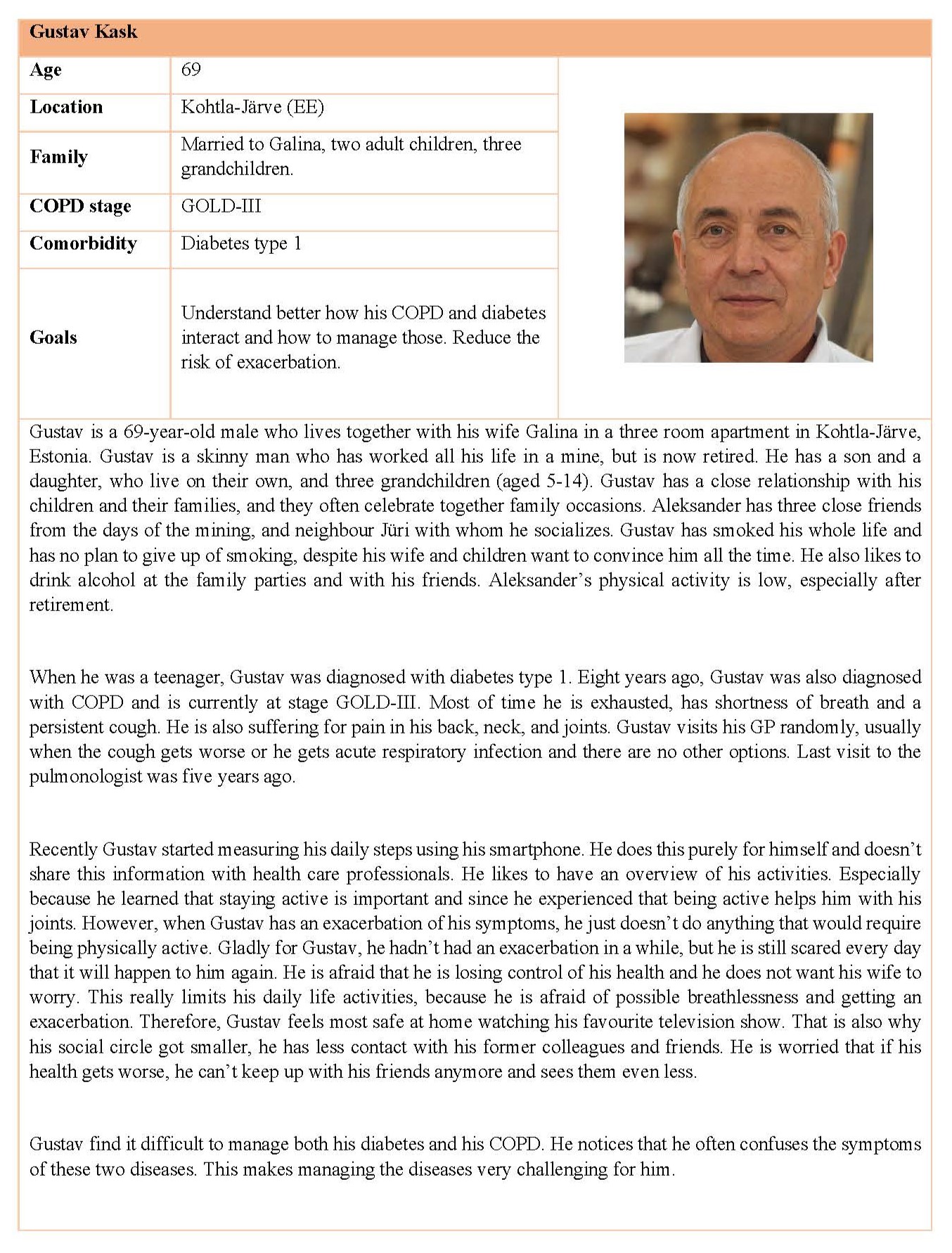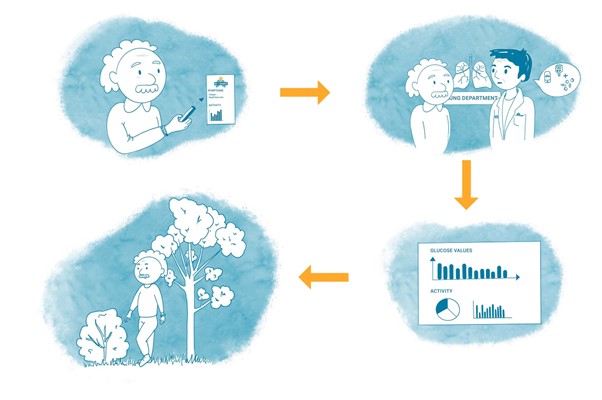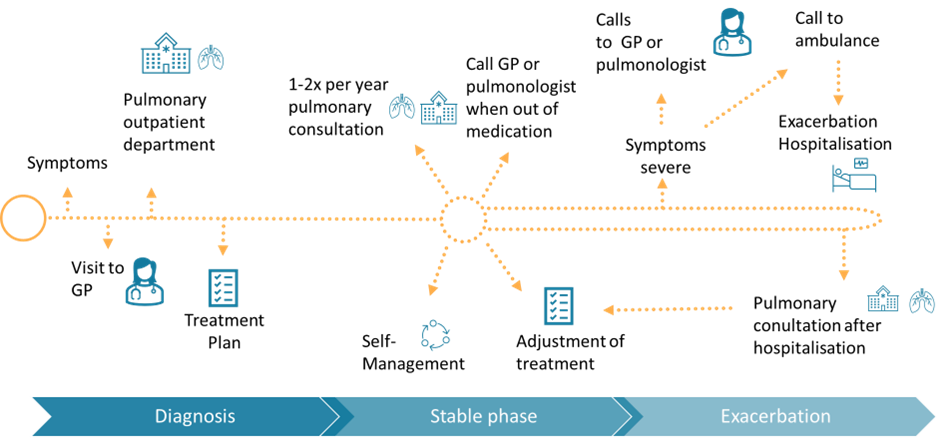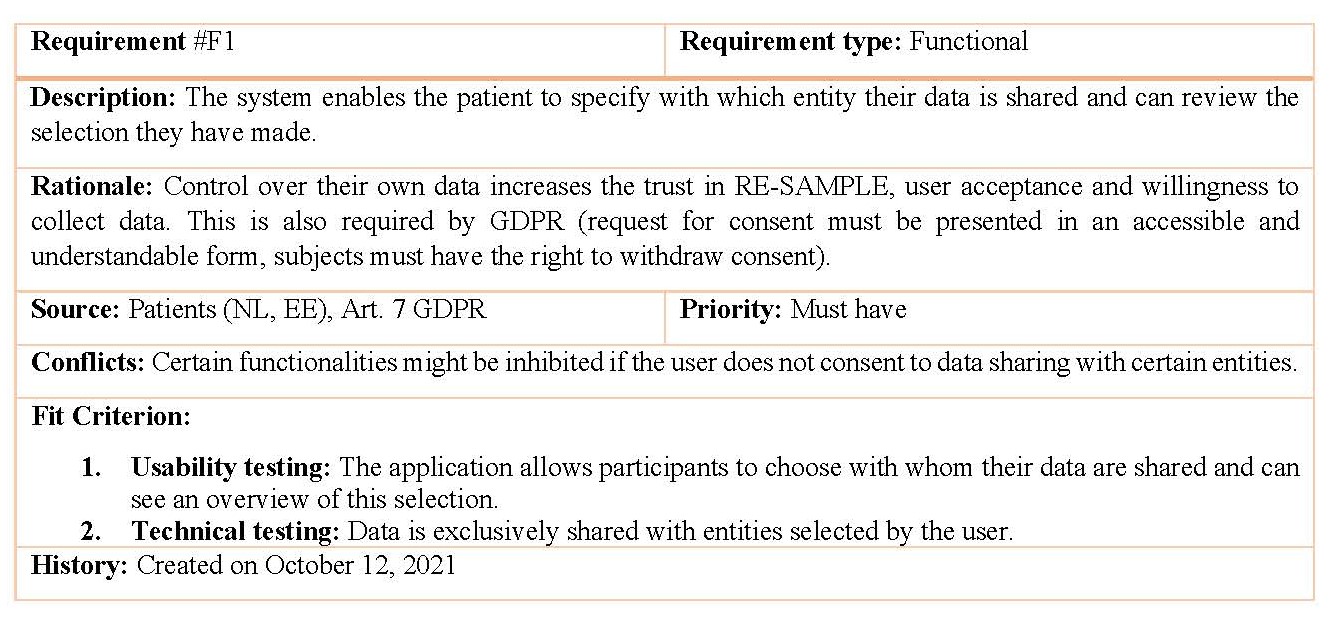Do you know what the future users of your health technology will need and value in everyday life? In other words, do you know what conditions your health technology must meet to match the needs, wants, goals and values and future user? Too often, healthcare innovations are developed from a technology perspective and insufficient attention is paid to including the future users in the development process. On the contrary, for a successful, sustainable and value-driven healthcare technology, it is crucial that it is closely aligned with the needs and requirements of the future user. This person-centered research is RRD's expertise.
How do we proceed and what does it achieve?
Our person-centered research will broaden your perspective and enable you to develop a health technology that connects to healthcare practice. We offer different (research) methods to identify user needs and requirements. Which method best suits your situation depends on your health technology and requirements. Examples of questions, which we have answered through our surveys are:
- What should an app look like that allows people with COPD to collect data and gain insight into their disease?
- How much accountability can and do patients want to have in a blended care approach, and when should caregivers be involved without adding to their burden?
- How can an eHealth application support people in e.g. self-management, behavior change, grief counseling? What is important to people in their lives (e.g., privacy, independence, self-direction) and how can the product support this?
We are happy to advise you. Below is an overview of research methods with practical examples:
One of the first steps is to conduct a stakeholder analysis, with the goal of ensuring that all stakeholders have been identified. Stakeholders can provide valuable input for successful health technology development, especially if they are included in the development from the beginning.
Personas are fictional characters, representing a group of end users and their characteristics. They are based on user profiles. These are overviews of user characteristics, relevant to a health technology or service (e.g., age, gender, literacy, health-related characteristics, experience with technology, etc.). User profiles are created through interviews with users and possibly literature reviews.
Personas are a powerful tool to better understand the user. They clearly represent who the health technology is being developed for. When personas are not clearly articulated, everyone has their own idea of who the prospective user is, and this imagined person might be very different from the actual user.
Case study

Scenarios bring to life the future users of the new health technology. In personas we describe the future users of the health technology and in the scenarios we describe how they interact with the new health technology, how they behave and what actions they take.
Scenarios provide a valuable method for understanding whether health technology design meets user needs. And to verify that developers are aligned with stakeholders.
Case study

Gustav has been using the RE-SAMPLE companion for a while and has connected his activity tracker to the system. He notices that after worsening of the symptoms, his diabetes type 1 is also not well under control anymore, but is not sure what the cause is. His pulmonologist Aksel suggests that he also includes his blood glucose measures and medication into the companion, so that they can see whether the COPD medication is affecting the blood glucose. Gustav adds the dates when he has taken prednisolone and also starts including his blood glucose measures.
A couple of weeks later, he meets his pulmonologist again, who asks Gustav, whether he can see also his physical activity data and glucose measures over the last weeks. That way, the pulmonologist can see over the same period of time on which days he took prednisolone, how active he was during those days and how the blood glucose level was. This would help Aksel to assess, whether this is something for the him to take up or if a referral to internal medicine would be more suitable. Gustav agrees and shares his data with his pulmonologist Aksel. A few weeks later, Aksel reviews the data and can see that there seems no relation between the medication and the glucose levels. He notices that there is a change in physical activity that might affected Gustav's blood glucose level. If Gustav feels well, he is outside a lot more, but during an exacerbation he mostly sits at home. This might be the cause of his changed glucose levels and might necessitate adaptation of his diabetes medication. As some form of physical activity is also important during an exacerbation, Aksel discusses with Gustav ways to be active and suggest that Gustav discusses with his internal medicine physician whether and how to adapt the diabetes medication according to his physical activities.
The Patient Journey Map is a method, mapping the patient's journey and the various points of contact in the healthcare system. Here the focus is on the patient's contact moments with care and how he or she experiences them. Based on this, we can make recommendations for improving the patient's care. Depending on your needs, we can go deeper into a specific phase of the patient journey or a specific aspect, e.g. how can health technology contribute to a positive patient experience?
Case study

User requirements are formal descriptions written from the user's point of view that describe a function, limitation or other feature that must be provided to meet the user's need. Depending on your health technology or service and requirements, we can identify the following requirements for you:
- Functional and modality requirements: technical characteristics and the type of technology and operating systems on which the technology must operate. In this category, we have also included privacy-related requirements in response to user statements.
- Service Requirements: Specify how to organize services around the technology (e.g., marketing or user support).
- Organizational Requirements: specify how the technology should be integrated into the organizational structure and work routines.
- Content Requirements: specification of content to be communicated via technology, and (if applicable) language level, persuasiveness, special accessibility requirements.
- Usability and user experience requirements: specification of the interface and interaction design of the technology and how UX factors, such as trust or fun, should be integrated into the technology.
Case study
